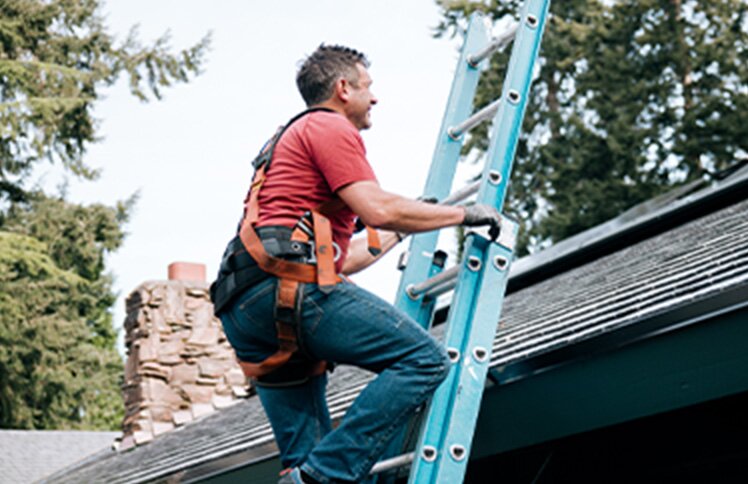Built to Last: Insights for Designing Fire-Resistant Homes
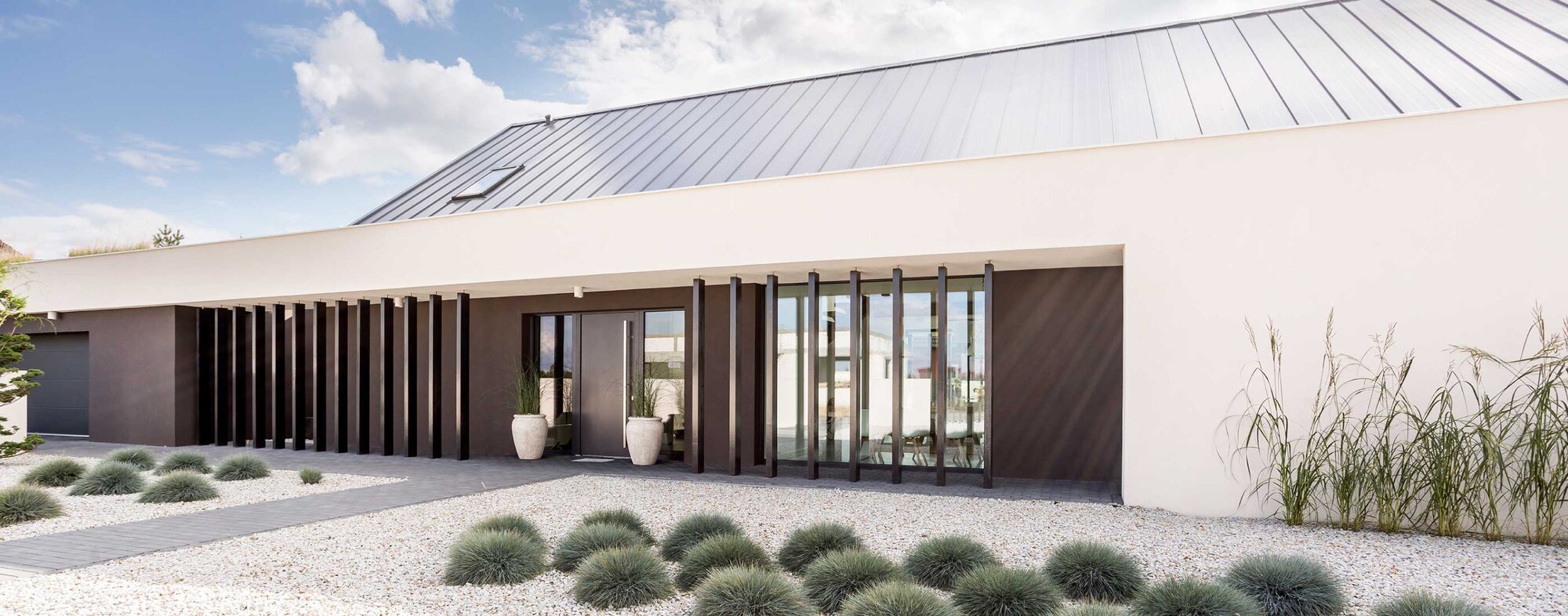
Wildfires pose a serious threat to homeowners across the U.S. In our 2024 Housepower Report, 35% of homeowners reported increased wildfire risk to their properties. At the same time, house fires continue to be a major threat, causing $11.4 billion in property damage in 2023 alone.
As fire risks grow, builders have an opportunity to meet the demand for safer, more resilient properties. While no home is completely fireproof, the following innovations can lead to more fire-resistant homes that are better equipped to stand the test of time.
Material options for enhanced fire resistance
- Metal roofing is one of the most fire-resistant options available. It’s non-combustible, highly durable, and can withstand extreme temperatures without warping or melting. That said, metal roofs can be more expensive upfront and may be noisier during heavy rain or hail.
- Clay and concrete tiles offer excellent fire resistance and longevity while adding aesthetic appeal. Their heavyweight construction makes them less likely to be dislodged in high winds. However, they can also be costly, require a reinforced roof structure to support their weight, and may crack under impact.
- Class A asphalt shingles, particularly those with fiberglass backing, provide a cost-effective alternative and still offer fire protection. While a promising solution, they could be less durable than other options and are more prone to wind and impact damage over time.
- Proper installation is just as crucial as the material itself. Using fire-resistant underlayment and ensuring tight seams can help prevent embers from slipping beneath the roofing surface and igniting the home.
Additional factors to consider when choosing fire-resistant materials include their durability, capacity to support structural loads, and ability to withstand various weather conditions.
- Insulated concrete forms (ICFs) are gaining popularity due to their fire resistance, energy efficiency, and structural strength. These blocks, made from cement and recycled materials, can withstand intense heat without compromising the integrity of the home.
- Fiber cement siding offers a balance between fire resistance and affordability. It mimics the look of wood while being non-combustible and highly durable as it’s composed of cement and cellulose fibers. Nichiha's Fiber Cement Board Cladding, for example, is specifically designed to offer protection against wildfires, making it a potential fit for homeowners in fire-prone areas.
- Fire-retardant-treated wood provides a natural wood aesthetic without increasing fire risk. However, fire-retardant chemicals have a limited lifespan and may need to be reapplied.
- Brick and stucco are traditional yet highly effective fire-resistant materials. Brick, in particular, has a strong fire rating and does not burn, though it requires proper reinforcement to prevent cracks that could allow fire penetration.
- Fire-resistant drywall is made with gypsum, which is about 21% chemically combined water. When exposed to fire, this water is released as steam, slowing heat transmission and preventing the spread of flames.
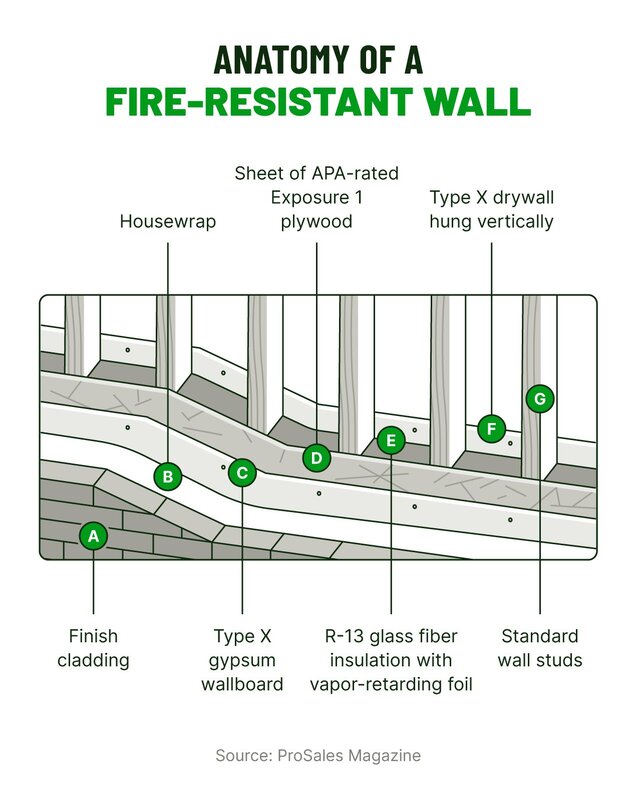
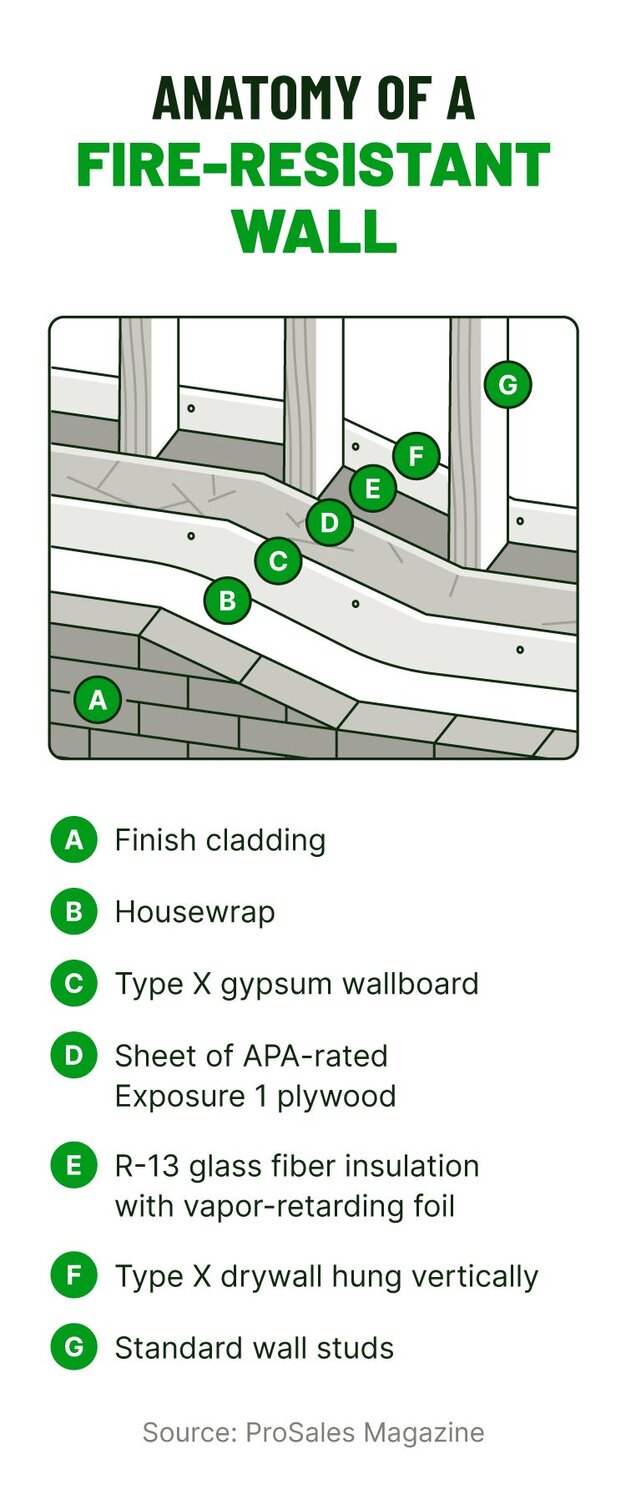
- Tempered glass windows are far more heat-resistant than standard glass and take longer to break under fire exposure.
- Double-paned windows add an extra layer of protection, with the outer pane acting as a barrier against extreme temperatures.
- Solid-core doors, especially those made of metal or fire-rated wood, offer better fire resistance than their hollow-core counterparts.
- Metal window shutters can help protect window frames, but they’re only effective if residents have advance warning to activate the shutters before a fire occurs.
- Fire-resistant landscaping includes clearing dead vegetation, spacing trees appropriately, and incorporating non-combustible ground coverings like gravel or stone instead of mulch.
- Constructing firebreaks or cleared areas free of vegetation can help prevent wildfires from spreading and provide safe zones for residents and first responders.
- Well-maintained community access roads in fire-prone areas allow emergency responders to reach homes quickly and evacuate residents safely.
- Fire-resistant decking materials, such as those made from PVC or concrete, offer greater fire resistance than traditional materials. Some brands, like Nova USA Wood, even manufacture wood decking that meets or exceeds Class A fire ratings.
- Concrete patios provide a fireproof alternative to wood decks, eliminating a potential ignition source near the home.
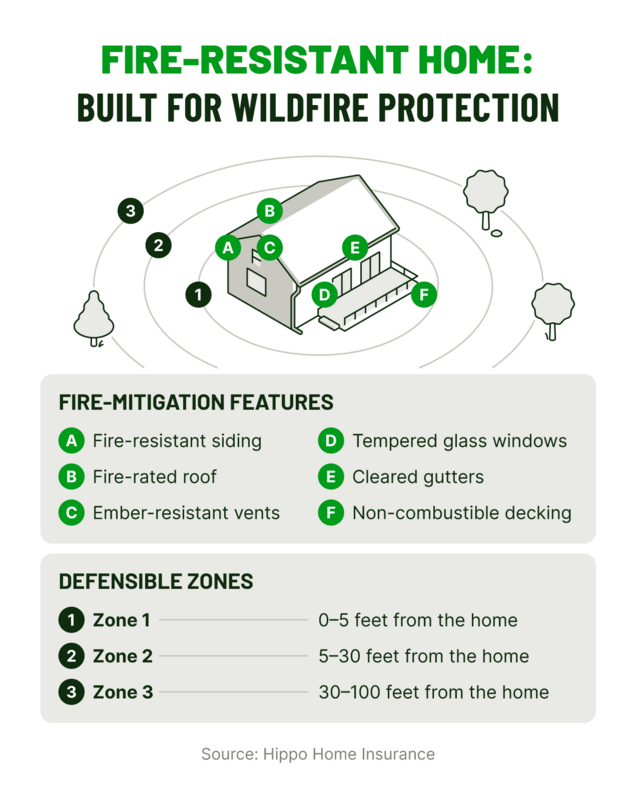
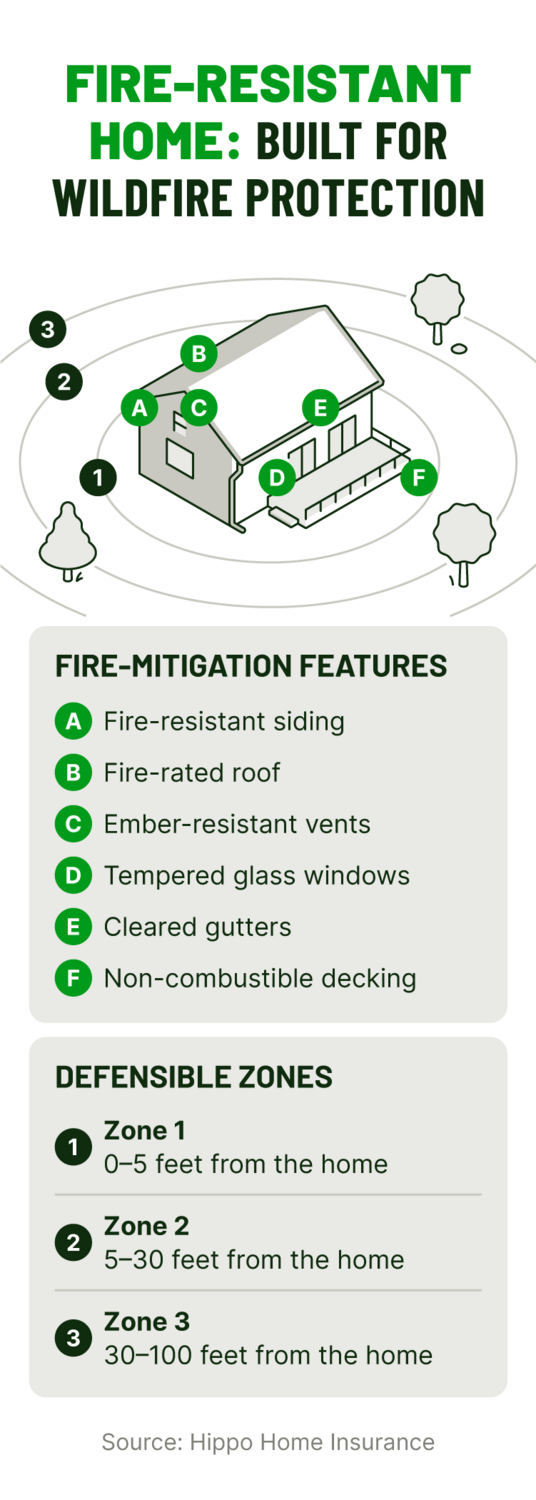
Integrating fire-resistant features into construction
- Fire-resistant sealants, such as fire-rated caulk, mineral wool, or intumescent sealants around pipes, ducts, and electrical wiring, can help prevent fire from spreading through small openings.
- Draft-stopping barriers made from fire-resistant materials can help limit airflow between attics, floor cavities, and wall voids, reducing pathways for fire to travel.
- Fire-rated walls and floors with properly sealed penetrations can help maintain their effectiveness in containing fire to its point of origin.
To maintain fire resistance, homeowners should perform routine inspections and maintenance of fire-stopping materials to identify wear and gaps that need replacing.
- Sprinkler system installation in new construction typically costs around $1.35 per square foot, making it a relatively cost-effective fire safety investment.
- Multipurpose or stand-alone sprinkler systems can help homeowners choose between integrating with a home’s plumbing or using a dedicated water supply.
- Individual sprinkler activation ensures that only the sprinkler closest to the fire discharges, which can help minimize water damage concerns.
- For optimal function, sprinkler systems will require regular maintenance from homeowners: checking water pressure, clearing obstructions from sprinkler heads, and scheduling periodic inspections.
The average property loss per fire was 55% lower in homes with automatic extinguishing systems (AES), such as sprinklers, than in homes without them. — NFPA Research 2024, U.S. Experience with Sprinklers
- Fire-rated walls, doors, and ceilings can help contain fire within a single room, preventing it from spreading to adjacent areas.
- Compartmentalizing high-risk areas such as kitchens, garages, and utility rooms with smoke and fire-resistant barriers can reduce overall fire risk.
- Fire-resistant doors with self-closing mechanisms can help isolate fire-prone areas and limit the movement of flames and smoke.
- Using fire-resistant materials (like fire-rated caulk) to seal gaps created by pipes, ducts, or other structural elements prevents fire from spreading through small openings in walls, floors, and ceilings.
- Sealed attic and crawl space barriers can prevent smoke from traveling through concealed spaces and spreading throughout the home.
Design considerations for more fire-resistant homes
- Home location and site planning: Constructing homes away from dense vegetation and maintaining defensible space around structures can help slow fire spread. Building on flat land could help reduce the risk of fire moving rapidly uphill toward a home.
- Water supply: Homes in fire-prone areas may benefit from dedicated water storage tanks, fire hydrant access, or irrigation systems that can be used to wet surrounding vegetation and structures in an emergency.
Builders paving the way in fire-resistant home design
Benefits and challenges of fire-resistant home construction
- Stronger protection and peace of mind: Fire-resistant materials and design features significantly reduce the risk of fire damage, helping protect lives and property.
- Potential for lower insurance premiums: Many insurers recognize fire-resistant construction with lower rates or insurance discounts, making homes more attractive through long-term cost savings.
- Increased market appeal: As demand for fire-resistant homes rises, properties built with fire-safety features can command higher prices and stand out in competitive housing markets.
- Reduced liability exposure: Integrating fire-resistant construction methods helps ensure compliance with evolving local and national fire safety requirements. This can reduce the risk of costly modifications or legal issues.
- Balancing safety and budget: Fire-resistant materials and features can increase upfront costs but often lead to long-term savings through lower insurance rates and reduced fire damage.
- Material availability: Some fire-resistant materials may be harder to source in certain regions, potentially leading to delays or increased costs.
- Complexity of design and construction: Fire-resistant construction requires careful planning and collaboration across multiple trades. Proper installation of fire safety systems adds layers of complexity.
- Adapting to local risks: Fire hazards and building codes vary by region, requiring builders to tailor designs accordingly. Resources like NFPA codes and standards and local building officials or fire departments can help builders meet regulatory requirements.
Insurance solutions for enhanced home protection
Download insights for fire-resistant homes
Related Articles
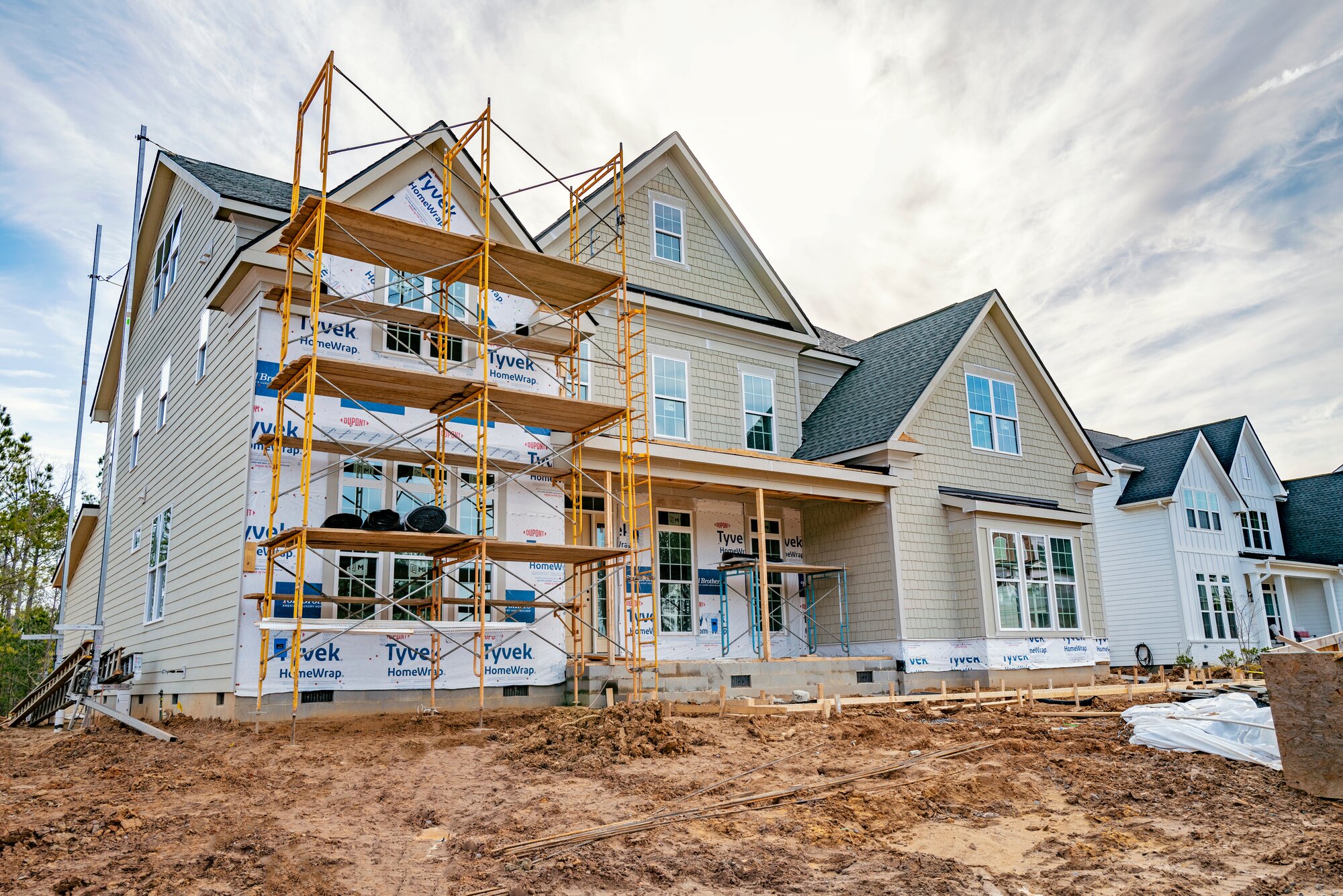
How New Communities Help to Lower the Risk of Homeowners Claims
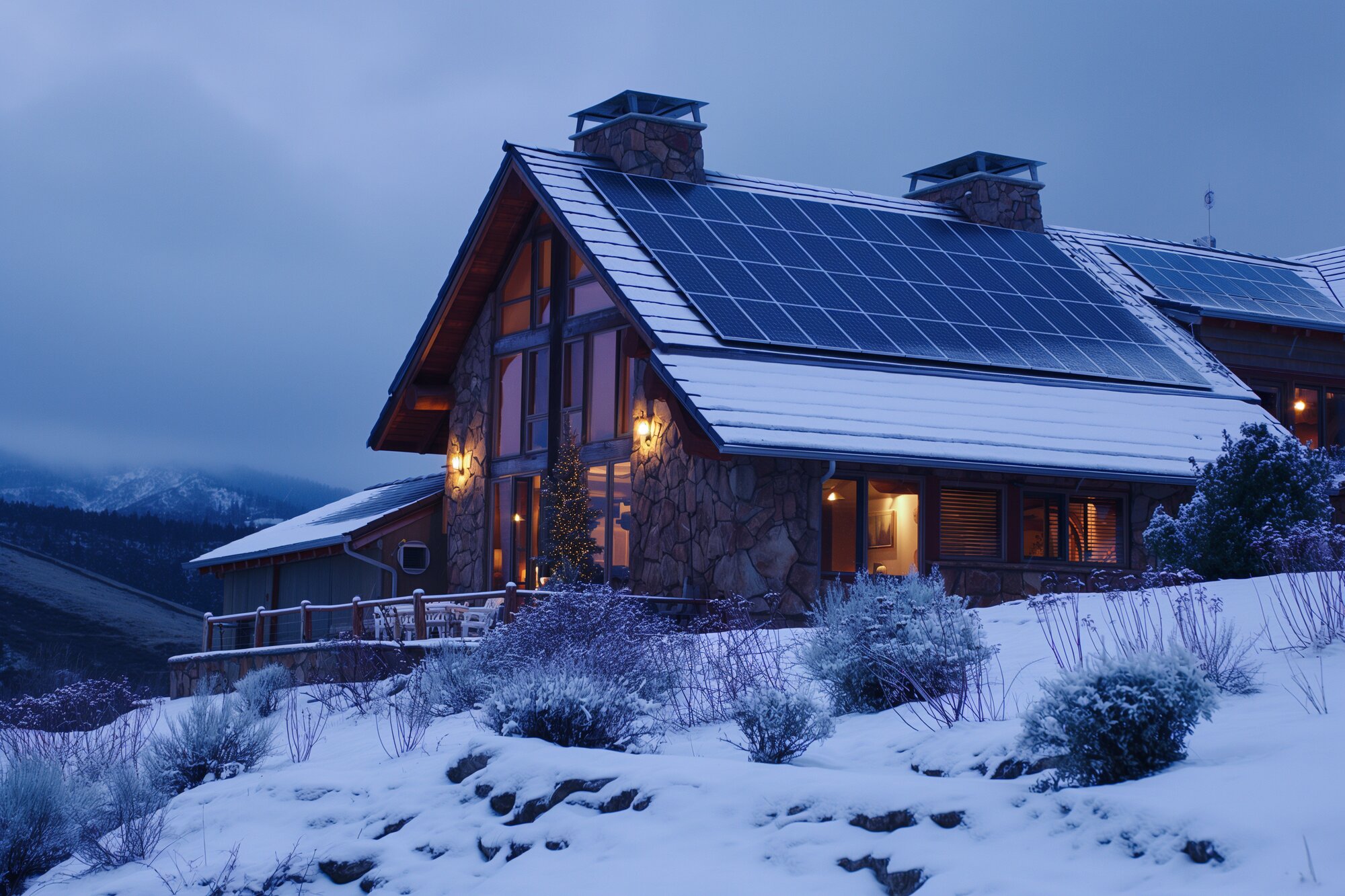
Building for the Future: How Residential Construction is Adapting to Weather and Climate Change
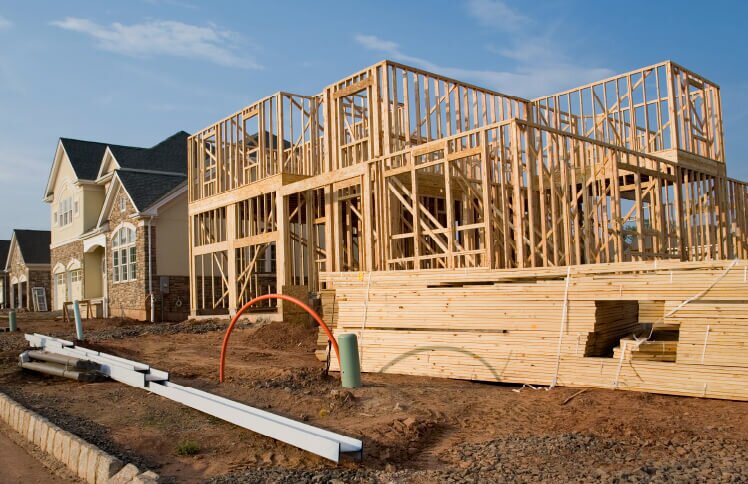
The Hippo New Homes Insights Report
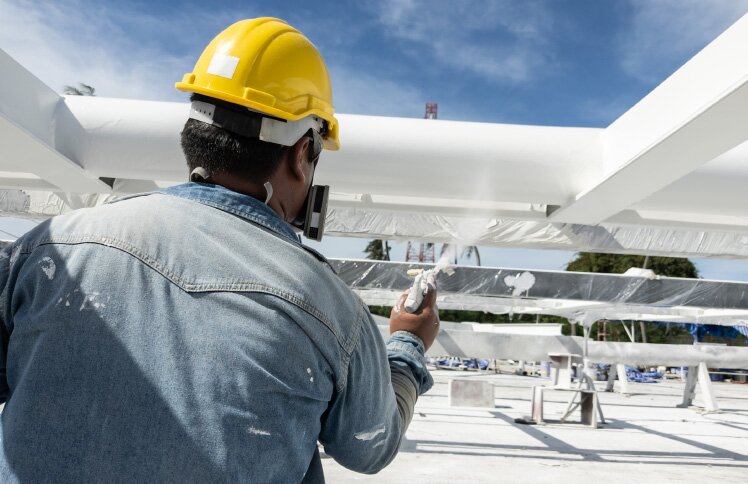
How To Fireproof Your Home + Fire Safety Checklist
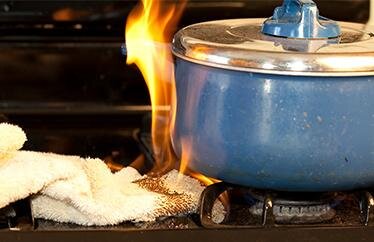
27 U.S. House Fire Statistics + Tips to Help Protect Your Home [2024]
